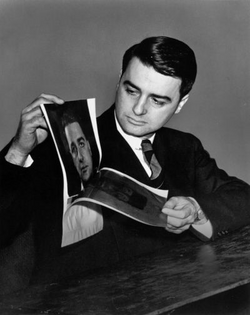

The first 35mm camera to go into production was Jules Richard’s Homeos camera. However, this camera was never produced or sold.

In 1908, a patent for a 35mm camera was issued to Leo, Audobard, and Baradat in England. In the gallery above are pictures made with the first-generation SX-70 by LIFE photographer Co Rentmeester, who experimented with the camera-before it went on sale to the general public-while shooting the cover story on Land for the October 27, 1972, issue of the magazine. After the invention of 35mm film, many inventors tried to use the new film for still photography instead of motion pictures. Here, pays tribute to Land’s vision and his determination to, as he once put it, “provide an opportunity for creativity that other photography doesn’t allow.” The sheer magnitude of its ambition and innovation dwarfs the Walkman, iPod, and nearly every other consumer-electronics product you can name.” Polarized lenses have a special filter that blocks intense. In 1935, he negotiated with American Optical Company to produce the first polarized sunglasses. Clarke’s “law” that advanced technology is, at its best, indistinguishable from magic, McCracken wrote that he could not think “of a greater gadget than the SX-70 Land Camera. When were polarized sunglasses invented Edwin Land, who founded the Polaroid Corporation in Cambridge, Massachusetts, developed the first sunglasses with a polarizing filter in 1929. Citing the writer and scientist Arthur C. Today in 1909, Edwin Land, a self-taught inventor and co-founder of Polaroid who revolutionized the way the world experienced photography, was born in Bridgeport, Connecticut. Self-described gadget-nerd Harry McCracken put the camera’s significance in perspective in a tremendous piece on Land and the SX-70 a few years back. Far from a mere consumer product, the SX-70 quickly became associated with, and in a sense helped to define, the early Seventies. That version of the instant camera fully captured the imagination and the attention of photography buffs, industrial design aficionados and pop culture commentators alike. His real advance came in 1972, when Polaroid unveiled a marvelous (in every sense of the word) device called the SX-70. Land introduced his first “Land Camera” way back in 1947. But the phenomenon has pre-digital roots. He was praised by the public as a scientific and business genius.Instant photography is now, with smartphones, the law of the land and a defining aspect of our digital age. Known simply as Polaroid, the system revolutionized traditional photography by compressing darkroom processes into an integrated film unit and producing a final photograph in the seconds following the click of a camera shutter. This famous inventor died of natural causes after a long life and a successful career. Land (19091991) was the innovative inventor responsible for conceiving of and perfecting instant photography. When he retired, he started his own research center. Herbert worked for more than 40 years to improve and develop optics. For more than a century after practical photography was invented in 1839, all photographers had to wait to see the pictures they had taken until the images had gone through a lengthy, chemical developing process. Born in Bridgeport, Connecticut, he entered. During the war, Edwin also worked with the military to improve ways of spying and taking pictures from far away. Edwin Herbert Land was an American physicist and inventor credited with introducing the Polaroid Land Camera. This revolutionary device, which went on sale in late 1948. He kept working as a scientist for the company and helped make the first ever instant camera. Edwin Herbert Land revolutionized photography with his invention of the Polaroid instant camera. When big Wall Street businessmen saw how Herbert’s ideas could work, they helped him start one of the most successful companies in American history. Edwin worked hard for several years to perfect a way to make polarized sheets in an industrial setting. He kept working on his research into how light can be polarized, and in the end, it was so good that his old professors invited him back to continue his research.
WHO INVENTOR EDWIN LAND SERIES
With the assistance of Richard Kriebel, Land presented the science behind his invention in a series of engaging public forums. After going to a good high school and graduating, he went to a good college for a short time before dropping out to work on a business project. In 1935, Edwin Land received the Hood Medal from the Royal Photographic Society, and in 1938, the Elliot Cresson Medal from the Franklin Institute in recognition of his pioneering work with polarizers. Even though neither of his parents went to college, Land started learning about optics and how light is polarized at a young age.

Edwin Herbert Land was born in a small town in New England to parents who didn’t have a lot of money.


 0 kommentar(er)
0 kommentar(er)
